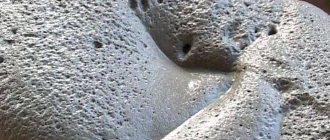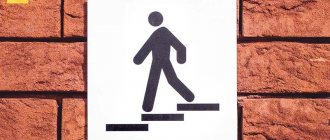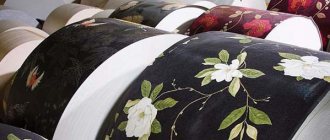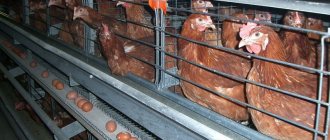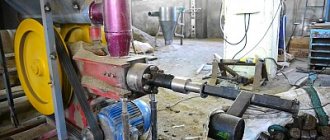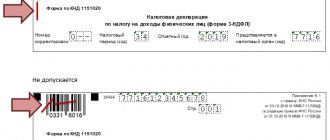Business in the field of manufacturing confectionery products is in most cases doomed to success - even during a crisis. This niche is quite extensive - choose the direction you will conquer. Analyze the consumer market, assess the level of competition and calculate the available finances. And it is the production of cakes and pastries that often becomes a popular area. Consider this type of activity too.
Our business assessment:
Starting investments – from 500,000 rubles.
Market saturation is average.
The difficulty of starting a business is 7/10.
Cake making as a business has important advantages compared to other areas. Throughout the year, regardless of the season, you will receive stable sales revenue. And before the holidays, the company only increases its income.
If you understand that a complete lack of capital investment will not allow you to organize a full-fledged enterprise, you can start producing cakes at home. Many housewives are engaged in this activity today, offering clients beautiful, delicious products to order. Such a business, if you have culinary skills, has a right to exist - minimal investment, large market.
True, you will have to try to develop a decent client base. But for this you can use many advertising tools - social networks have shown themselves to be excellent in practice. Making cakes at home, when the business takes off, will bring in stable revenue - handmade sweets are very much appreciated among consumers and cost a lot. Even if you sell 1 “simple” cake a day, you can get at least 2,000 rubles in net profit. But during a working “shift” in the kitchen you can make 2-3 such cakes.
But the wholesale sale of confectionery products will bring the entrepreneur many times more profit. It’s great if you manage to find the necessary finances to open at least a small workshop.
Organizational issues when starting a confectionery business
Since you are planning a business in the food industry, it would not hurt to first familiarize yourself with the legislative and sanitary acts regulating activities in this direction. To organize a business in the production of cakes and pastries, you need to collect a considerable package of documents. Are you poorly versed in legal subtleties? Then it is better to entrust the matter to a specialist.
Register as an individual entrepreneur or LLC and register with the tax office. Cooperation with large clients in the future will greatly facilitate the form of entrepreneurial activity of the LLC.
Rospotrebnadzor and the sanitary inspection must approve the production technology, recipes and raw materials used. Mandatory licensing of manufactured confectionery products has already been abolished, but you will still have to obtain a certificate of conformity! Also, the State Fire Supervision Authority must be informed about the opening of a business - in the future, the premises found for the workshop will be checked to ensure that all fire safety rules are observed.
In your business plan for the production of cakes and pastries, include the question of the need to create your own brand. This is quite a costly business, but useful, since this makes it possible to attract the interest of consumers to the products produced. The process itself includes trademark registration and logo development. At first, in order not to spend significant sums on product branding, you can work without your own trademark.
Range of products
Even a small workshop for the production of cakes and sweet pastries can offer customers a wide range of delicious products. And to win the love of consumers, offer them a wide range of products. It will be difficult for novice entrepreneurs to immediately provide a wide selection of products - 3-5 varieties of cakes and pastries may be enough.
Elaboration of the assortment is of great importance - it becomes possible to determine what equipment and inventory for cakes will be purchased at the start.
The company can produce the following types of cakes:
- biscuits,
- waffle,
- sand,
- curd.
Each type of cake is popular among consumers. If you offer quality products at affordable prices, there will be no end to buyers. Single-tier and multi-tier cakes, with any fillings, of any shape – there is a huge scope for the technologist’s “imagination”. The situation is the same with cakes - there are a lot of recipes and methods of making them.
The production of cakes in production begins only after careful development of recipes and creation of specifications.
Decide right away in what packaging you will sell the finished cakes. For example, the production of waffle cakes can be carried out by packaging them in cardboard boxes. But the finished sponge cakes are placed on a base and covered with a transparent “lid”. Cakes are delivered to small confectionery stores directly in corrugated containers or on plastic trays covered with cling film.
You will not go wrong if you plan to produce Honey cake, waffle and biscuit products - these are the products that are in high demand. Diet cakes are actively gaining popularity. Among the cakes, Potatoes, Custard, and Eclairs remain the favorites among customers.
Cake production room
Important for opening a full-fledged confectionery production is the choice of premises that meet all food and fire safety requirements. Cake production cannot be organized in semi-basement and poorly ventilated areas. It is prohibited to locate such production facilities in close proximity to industrial facilities. The room itself must be heated, with a ventilation system, with hot and cold water supply. The walls should be tiled to a height of 1.5 meters, and the ceiling should be painted with non-toxic paint. If you want to open according to all the rules, then be sure to study the requirements of Rospotrebnadzor (SES) for food production.
The minimum room area starts from 200 square meters. m. The premises are divided into several departments or workshops. The main departments are the oven department and the cake making shop. In addition to production departments, space for warehouses is required. There should be several of them: a warehouse where eggs and egg products (egg whites) are stored, a warehouse for flour and sugar, and a warehouse for finished products. Also, the enterprise must have a refrigeration section for storing perishable products such as condensed milk, cream, creams and so on.
For production, enough raw materials are purchased to last seven days of work (flour, sugar, eggs). And those products that spoil quickly are constantly imported into production (sour cream, cottage cheese, liquid cream).
Technology for making cakes and pastries
Surely, the recipe for making cakes is familiar to many housewives. In production workshops everything is the same, just on a larger scale and the process is automated.
Much attention is paid to purchased raw materials in production. Eggs, milk, water, flour, food fillers and additives, fruits, syrups - each ingredient must undergo strict incoming control when entering the workshop.
In general, the technological scheme for preparing cakes consists of 3 main stages:
- Baking base.
- Preparation of creams.
- Finishing of the finished product.
The entire process is controlled by technologists and shift foremen. And even the presence of modern automatic equipment does not replace manual labor - in production, many operations are carried out manually. This especially applies to exclusive cakes. The number of personnel is determined depending on the planned sales volumes and the complexity of the assortment.
Cake production technology
Before the actual “assembly” of the cake, a whole series of preparatory procedures are carried out. A cake is a kind of food constructor, and each component here is prepared according to its own recipe and technology. So, the flour is passed through a flour sifter and weighed. Eggs must be treated in a special bath to remove dirt and bacteria from the surface. Then they are broken, the white is separated from the yolk and filtered. The flour and eggs then go into dough mixing machines and are turned into dough.
Then comes the most important stage of production - baking. Each type of dough has its own temperature regime, since even well-prepared dough can easily be spoiled during baking. Especially if a newbie has approached the matter. Therefore, this stage is trusted only to experienced bakers, whose work is complicated by the fact that it is always hot near the stove.
After baking, the semi-finished product is allowed to cool in a special compartment. Some types of semi-finished products, such as biscuits, can cool for at least 24 hours before they reach the required condition.
Meanwhile, in another department the cream is being actively prepared. The temperature in this department is an order of magnitude lower than the oven shop: high temperatures are not suitable for cream products, and they quickly deteriorate. Syrups are also prepared here from water and sugar, which are needed to make the finished product soft and tender.
When all the ingredients are ready, the cake is assembled. Experienced confectioners skillfully trim the uneven edges of semi-finished products, moisten them with syrup, add cream and filling, and sprinkle the edges with nut topping. The almost finished cake is placed in a box and sent for decoration. Confectioners with good imagination take on the task of decorating cakes. They make bright flowers, animal figures and other objects from ordinary cream. Here the cake takes on its appetizing appearance and is ready to hit the store shelves.
Confectionery shop equipment
And if making cakes to order in your own kitchen requires only the simplest equipment, then to carry out the process in a full-fledged workshop you need industrial equipment that allows you to automate the preparation of sweets to the maximum.
Confectionery equipment for making pastries and cakes differs in its configuration - everything depends on what assortment is planned for release. In your business plan, be sure to consider possible technical equipment options to choose the best one.
The lines are different, so evaluate their power and capabilities. For example, to “process” sponge dough, you will need the following cake baking equipment:
- dough mixing machine,
- bake,
- cooling conveyor,
- cutting machine,
- folding conveyors,
- machine for assembling sweet products,
- automatic cutter for the top of the cake.
In general, almost every confectionery line for the production of cakes includes the designated equipment. The only difference is in the specific technological parameters of machines and devices, their dimensions and functionality.
In addition to the main line, the workshop will have to purchase industrial refrigeration chambers, washing baths, sifters, and additional containers. You will also need pastry equipment for cakes - spatulas, pastry syringes, knives, spoons. All this is a significant part of the costs.
To buy equipment for the production of cakes, fully equipped and ready for work, you will need at least 3,000,000 rubles. Quite an impressive investment for many. And this takes into account the fact that the acquired line will not have high power - no more than 200 kg/h. If the price of equipment for cakes and pastries seems prohibitive to you, you should think about buying a used line. But such transactions are often fraught with risks - sellers may simply be selling illiquid assets.
Home production is, of course, less expensive in terms of equipment. Surely the homely housewife already has all the kitchen appliances in stock - the money will only have to be spent on the necessary products. You will equip a small confectionery shop, where manual labor will predominate, for no more than 300,000 rubles - an excellent option for setting up the production of custom-made cakes. You only need to buy ovens, dough mixers, sifters, and refrigerators.
Equipment
The cost of setting up a workshop for the production of cakes largely depends on the volume of production and the financial capabilities of the organizer. A small workshop, where the main operations are performed manually, will not require much expensive equipment. In general, the equipment of the line is very similar to that used in the production of most confectionery products. The following components may be required here: flour sifter, confectionery ovens, mixers, dough mixing machine, enrobing machine, depositors, cooling tables, working baths, thermal containers for confectionery masses, systems for spraying syrup, refrigeration units. As well as auxiliary equipment: work tables, carts, racks and small kitchen utensils (knives, spatulas, spoons). The total cost of equipping a production workshop can range from 1.5 million rubles or more.
Finding suitable premises for doing business
To open your own production of cakes and pastries in Russia, you will need to find an area of at least 150 m2.
Please note that not every available space is suitable for organizing a business in the food industry. Rospotrebnadzor and SES impose quite strict requirements on them. The workshop will need to be divided into separate zones - raw material acceptance, production, warehouses, quality laboratories. Supply water, sewerage, heating to the premises, and provide rooms for staff.
You will launch the production of sponge cakes only after you receive approval from government agencies.
Raw materials and assortment
The main products for the production of cakes and pastries are wheat flour, granulated sugar, eggs and egg products, butter, salt, powder, nuts, starch, margarine, cream. The approximate calculation of raw material costs in monetary terms is as follows: for production of 250 kg. finished products (313 cakes, 800 grams each) will require the purchase of ingredients for a total amount of 190 thousand rubles.
As for the range of products produced, cakes without preservatives and dyes are in demand today. Low-calorie cakes are in great demand. Retail chains no longer sell butter cakes in the price segment up to 100 rubles. Up to 80% of all sales come from cakes ranging from 170 to 240 rubles.
In the near future, the market is forecast to increase demand for premium cakes. Now they account for about 10% of all sales (Moscow). But you shouldn’t start a business by producing only expensive cakes - the market for such products is too specific and limited.
Sales of finished confectionery products
Wholesale sale of cakes and pastries is the key to the success of the confectionery business. Even at the stage of developing a business plan, try to establish contacts with large buyers. It will be difficult and expensive for a beginner to do this. And if all else fails, start selling cakes and pastries to retail grocery stores.
The conditions that large supermarkets impose on entrepreneurs sometimes turn out to be simply impossible for those new to business. Shelf space is expensive, and if turnover is low, products may be removed altogether.
At the same time, you can offer services for fulfilling individual orders. Make exclusive Bird's milk cakes, wedding and birthday cakes.
More to read:
What equipment to buy for the production of dryers?
Business idea: opening a mini-production of cookies in Russia.
How to write a business plan for making caramel apples?
Profitability of a confectionery enterprise
Organization of production will require at least 4,000,000 rubles. Expenses will be spent on purchasing an industrial line, providing raw materials, preparing the premises for work, and completing all paperwork. You can open a private mini-confectionery shop with 500,000 rubles - this is an option for those who are tight on finances.
The wholesale selling price of sponge cakes and pastries is from 100 rubles/kg.
According to experts, industrial production of custard pies and cakes will pay for itself within 2 years. But these are very optimistic data, feasible with established sales channels. If the equipment is idle, expect to reach the break-even point no earlier than in 3 years.
Sponge cakes are the most common. They have high taste qualities and, thanks to the fluffy and soft structure of the biscuit, are very convenient for making.
Depending on what finishing semi-finished products the sponge cake is combined with, cakes are divided into the following groups: sponge cakes with protein cream finishing, sponge cakes with butter cream finishing, glazed sponge-cream cakes, sponge-cream cakes with sprinkles, sponge cakes with cream and fresh fruit, sponge cakes with fruits, sponge cakes with cream, sponge cakes.
There may be other options for combining semi-finished products.
The described methods for decorating cakes are exemplary.
SPONGE CAKES WITH PROTEIN CREAM FINISHING
Below we describe the methods for preparing the following cakes in this group: sponge cake with protein cream and a fruit layer, sponge cake with protein cream and a cream layer, sponge cake “Kalach”.
RECIPES FOR 1 T OF SPONGE CAKES WITH PROTEIN CREAM FINISHING
♦ RECIPE 214 (2).
CAKE “SPONGE CAKE WITH PROTEIN CREAM AND FRUIT LAYER”
The cake is layered with fruit filling, topped with protein cream and fruit or candied fruits, and the sides are sprinkled with fried biscuit crumbs.
The round sponge cake is cut lengthwise into 2 or 3 layers. The bottom layer is soaked only slightly with syrup, taking into account that with abundant soaking, the sponge cake will become soggy and the cake, having a weak base, will be deformed during subsequent processing. The soaked layer is covered with filling and glued to the top layer. With a three-layer cake, the second layer, glued to the first, is soaked a little more and glued with the filling to the third (upper) layer, which is generously soaked in syrup. To soak the first layer of a 1 kg cake, approximately 30-35 g of syrup is consumed, the second layer - 40-45 g and the third - 60-70 g.
The top and sides of the cake are covered with a thin layer of filling, and protein cream is placed on top of the filling. A corrugated pattern is made on the creamy surface of the cake with smooth movements of a pastry comb, then the cake is placed on a metal circle, lifted in the palm of the left hand and, while rotating the circle, the side edges of the cake are aligned with sliding movements of a knife moistened with hot water from top to bottom and towards you, as shown in Fig. 205. Remove excess cream from the knife onto the edge of the basin. After aligning the edges, there should be no burrs from the cream. While rotating the cake in the palm of your left hand, sprinkle the sides with fried sponge crumbs with your right hand.
205. Aligning the cream on the side surface of the sponge cake.
The surface of the cake is squirted with protein cream. If the cream is raw, then after injection the cake is placed in the oven for 2–3 minutes to tint the cream at 230°C (a thin, stable crust forms on the cream). During tinting, the protruding parts of the pattern darken first and a sharply defined pattern is obtained. Custard does not require tinting; powdered sugar is used in syrup to prepare the cream.
After cooling, the surface of the cake is sprinkled with powdered sugar and decorated with candied fruits or dried fruits from syrup.
Any sponge cake can be made in portions. To do this, a template with certain sectors of equal area is made from aluminum or tin. This template is moistened with hot water and placed on the creamy surface of the cake prepared for injection, on which an imprint of the shape of the portions is obtained.
206. A cake divided into ten servings by a template.
In Fig. 206 shows the marking of the surface of the cake with a template for ten servings, in Fig. 207 - part of a portioned cake with a fruit layer. In these cakes, all portions are finished the same way, but you can finish them differently.
207. Portions of sponge cakes with protein cream, with a fruit and cream layer.
♦ RECIPE 215 (3).
CAKE “SPONGE CAKE WITH PROTEIN CREAM AND CREAM LAYER”
The cake is layered with butter cream, the top is decorated with protein cream and fruits or candied fruits, the sides are sprinkled with fried sponge crumbs.
The cake is made in the same way as according to recipe 214 (2), but for the layer of biscuit layers they use not fruit filling, but butter cream.
♦ RECIPE 216 (1).
SPONGE CAKE “KALACH”
The cake is layered with chocolate buttercream and has the shape of a roll. The top is covered with egg whites whipped with sugar. The cake making phases are shown in Fig. 208. A round sponge cake with a diameter of 200 mm for a cake weighing 1 kg is cut into 2 layers. Both layers are sandwiched with chocolate buttercream prepared according to recipe 64 (22), having previously been soaked in syrup. Stepping back from the edge of the cake by 35–40 mm, cut out part of the cake with a knife at one third of the circumference. The cut out part of the flatbread is taken out from the middle and, having previously rounded the edges, is placed on the wider surface of the flatbread as the base of the kalach ridge. Cover the entire flatbread with well-beaten egg whites and sugar, smoothing the surface with sliding movements of the knife from bottom to top and to the left, forming a high ridge and arch of the roll from the whites. After treating the surface with a knife, it is sprayed with whipped egg whites from round tubes.
RECIPE OF WHIPPED PROTEINS WITH SUGAR FOR 1 G PHASE
Using a soft brush, brush the roll with egg yolk, then place it in the oven for 3 minutes at 240°C to obtain the color. You cannot keep the kalach in the oven for a longer time, as the chocolate cream may melt, which will worsen the taste of the kalach. If you don’t get a beautiful color scheme, the roll should be placed in the oven a second time, having first transferred it to a cold sheet.
208. Phases of making the Kalach cake: 1 - sponge cake cut into layers, 2 - layered with cream and soaked cake with a piece cut out for the ridge, 3 - cake before being placed in the oven.
The colored roll is cooled and sprinkled with powdered sugar.
Cake “Kalach”, weight 1 kg.
SPONGE CAKES WITH BUTTER CREAM FINISHING
Below is the technology for making the following cakes in this group: “Coffee” (up to 1 kg), “Coffee” (over 1 kg), “Autumn”, “Nut-sponge”, “Othello”, “Fairy Tales”, sponge-cream.
♦ RECIPES 217, 217a (4, 4a).
SPONGE CAKE “COFFEE”
The cake is layered with buttery coffee cream, topped with coffee and chocolate cream and decorated with nuts, and the sides are sprinkled with fried sponge crumbs.
It is recommended to make this cake as a three-layer, square cake. For the biscuit layer, finishing the surface and sides, butter coffee cream is used, prepared according to recipe 62 (28), and for injection, butter chocolate cream is used according to recipe 64 (22).
To give a more pronounced coffee taste, use coffee syrup to soak the biscuit, prepared according to recipe 31 (35).
Sponge cake “Coffee”, weight 1 kg.
♦ RECIPE 218 (18).
SPONGE CAKE “AUTUMN”
The cake is round, layered with cream, the sides are sprinkled with crumbs. Fungi are arranged and arranged on the surface of the cake.
To layer and coat the cake, use white vanilla cream prepared according to recipe 49 (21) or chocolate cream according to recipe 64 (22).
After gluing the biscuit layers, soaking and coating the top and sides of the cake with cream, wavy lines are applied to its surface using a pastry comb. Fungi made in advance from an airy semi-finished product are placed on the surface of the cake, with the largest mushroom with a chocolate-glazed cap placed in the center, and 5–7 smaller mushrooms placed around it in a horizontal and vertical position. The lower diameter of the large fungus is 40 mm, height 40 mm, cap diameter 35–40 mm. The dimensions of smaller fungi are as follows: lower stem diameter 25 mm, height 30–35 mm, cap diameter 20 mm.
Mushroom caps can be glazed in chocolate heated in a water bath or sprinkled with crumbs before baking. The hat is glued to the stem with cream.
RECIPES FOR 1 m SPONGE CAKES WITH BUTTER CREAM FINISHING
Cake with vanilla cream, on a white background of which most of the fungi have chocolate-glazed caps. You can make a cake with chocolate cream, put a mushroom with a glazed cap on its surface, in the center, and sprinkle the caps of all other mushrooms with crumbs. Such combinations of the color of the mushroom caps with the color of the cream create a good impression.
Sponge cake “Autumn” with vanilla cream, weight 1 kg.
Several leaves are planted between the fungi with white cream.
♦ RECIPE 219 (8).
CAKE “NUT-SPONGE CAKE”
The cake is square, layered with chocolate cream prepared according to recipe 64 (22) and praline, the top is decorated with chocolate cream, the sides are sprinkled with crumbs.
The sponge cake is cut and soaked in the same way as for other cakes, but the middle layer is glued with the bottom praline, and the top layer with chocolate cream. Cocoa powder is included in the recipe to enhance the color shades of individual syringe shapes.
Color plate 4 shows a finished cake weighing 1.5 kg. It is decorated with large roses made of chocolate cream, and for contrast, in the center and on the sides there are roses made of white (vanilla) cream, which enlivens the design.
♦ RECIPE 220 (19).
SPONGE CAKE “OTELLO”
The cake is square, layered with butter cream, the top is decorated with cream, nuts, and fruits; the sides are sprinkled with crumbs.
This cake, despite its specific name, does not have a strictly established design. Shown is one of the cake design options, characterized by the following details: two flounces reminiscent of a theater curtain, a lyre - an emblem of art, two purple roses, the inscription "Othello", made first in white, and then again in dark cream (white with the addition of burnt and red paint ). The nuts used are walnuts. In the upper corner of the cake there is a cherry, glazed with jelly and covered with two pink buds made of cream.
Sponge-cream cake “Othello”, weight 1.5 kg.
The recipe calls for cognac; it is added to the syrup for soaking.
♦ RECIPE 221 (21).
SPONGE CAKE “FAIRY TALE”
The cake is oblong shaped, layered and finished with chocolate and vanilla buttercream; the surface is decorated with fruits and candied fruits; the sides are sprinkled with biscuit crumbs. Cake weight from 0.5 kg to above. This cake is decorated in the form of a birch or pine log; roll finished with cream; three-layer rectangular oblong cake decorated with cream.
For the first two varieties of cakes, a roll is made from a thin sponge spread. After removing the paper, the spread is moistened with syrup, covered with chocolate cream and rolled into a roll, the surface of which is soaked again; then apply the cream (the amount calculated according to the recipe), spread it with a knife over the roll, including its ends.
To obtain a smooth creamy surface, you should take a parchment tape 8–10 cm wide, 18–20 cm long, moisten it in hot water, crimp it, use it to wrap the roll around one end and pass the tape, continuing to crimp the roll, to the other end. After this, the bottom part of the roll is sprinkled with fried biscuit crumbs on all sides in a layer about 1 cm wide.
Shown are two Fairytale cakes, one finished with chocolate and white cream, the other in the shape of a birch log. When making a log, after leveling the surface of the roll with parchment, several rings of white cream are deposited on it using a smooth tube, the middle of which is filled with chocolate cream. Using a knife dipped in hot water, an even cut of white and chocolate cream is made; a ribbed surface is made on the cut, resulting in white “knots” with a dark core. Near each “knot”, two pistachio-colored leaves are syringed. In different places along the width of the cornet log, dark lines are planted with burnt cream tinted, imitating blackening on the bark. You can plant a beetle cast from chocolate on a log.
Sponge cakes “Fairy Tale” in the form of a birch log and a roll decorated with cream.
A rectangular cake is decorated in two ways. One of them will make a joke in the next one. Two rectangular layers are cut out of a regular sponge cake (for a cake weighing 0.5 kg - 16 cm long, 8.5 cm wide). The layers are soaked in syrup and glued with cream. The sides are covered with cream and crumbs. The surface is finished with cream and decorated with fruits or candied fruits.
When decorating a cake in another way, a long oval-shaped sponge loaf baked in a special form (see Fig. 21) is cut lengthwise into three layers, soaked in syrup, glued together and finished with cream.
♦ RECIPE 222 (17).
CREAM SPONGE CAKES WEIGHTING LESS THAN 1 KG
The cakes are layered with buttercream, finished with cream and fruit, and the sides are sprinkled with crumbs.
This is a large group of cakes, varied in shape, taste and weight. Small cakes (250–500 g) are usually made from two layers of sponge cake. When making each cake, it is recommended to use creams of different colors and different flavors (recipes 47–70). You can layer the cake with one cream, and cover and finish the surface with another cream. In this case, you should select the most successful flavor and color combinations of creams.
Cakes are finished using tubes of various configurations.
Along with canned fruits and candied fruits (or instead of them), fresh fruits, variously decorated and colored jelly, fruit filling, tinted and natural, can be used to decorate cakes.
To improve the taste of the cakes, cognac or strong dessert wine is added to the soaking syrup.
Shown are two-layer round and square cakes weighing 500 g each. The sides of square and rectangular cakes are usually sprinkled with an even layer of sponge crumbs, and round ones with a wavy layer.
Two-layer sponge-cream cakes weighing 500 g.
♦ RECIPE 223 (17a).
CREAM-SPONGE CAKES WEIGHTING 1 KG OR MORE
Cakes are made in the same way as according to recipe 222 (17), but a little more syrup and less sponge cake are used. These cakes are made from two and three layers of sponge cake.
Presented is a round three-layer portioned cake weighing 1.5 kg, cut into 12 identical portions of 125 g each.
Sponge-cream portioned cake, weight 1.5 kg.
There are six finishing options, each option applied to two opposite portions of the cake.
♦ RECIPE 224.
CAKE “LUKOSHKO WITH MUSHROOMS” (FIGURED)
The sponge cake baked in a round shape is cut into three layers, soaked in syrup and glued with white butter cream. The side surface is also finished with white butter cream in the form of a wide smooth ribbon. At the top and bottom base of the cake, using a carved “ribbon” tube of white cream, painted yellow, draw ribbons along which a touch of chocolate finishing cream is applied. Leaves of white cream tinted green are planted on the surface of the cake around the circumference and mushrooms are placed.
To make mushrooms, sprinkle a thin layer of crumbs of the semi-finished product “Lyubitelsky” onto a parchment sheet and place mushroom stems from white buttercream on it.
The mushroom caps from the bush are placed on the stems and the mushrooms are placed in the refrigerator to cool.
Cake weight 2 kg.
RECIPE FOR 1 T OF CAKES
♦ RECIPE 225.
CAKE “APRICOT” (LENINGRAD)
The cake has a round shape, consists of four layers of sponge cake, layered with fruit cream mixed with apricot syrup, apricot jam and shares of pitted apricots.
Cake weight 1 kg or more.
RECIPES FOR 1 T OF CAKES
RECIPE HA 1 m APRICOT COOK
Apricot syrup from compote together with sugar is boiled to a dry matter content of 57%
The apricot poaching is cooled and flavored with wine.
RECIPE FOR 1 T APRICOT SYRUP
A round sponge cake is cut into 4 layers. The first, thinner layer is spread with apricot jam, a second layer is placed on it, this layer is soaked with apricot syrup, slices of pitted apricots are placed over the entire surface and covered with a layer of butter-apricot cream. A third layer of sponge cake is placed on the cream, moistened with the same syrup and greased with apricot jam.
The fourth layer placed on the jam is soaked in syrup, the top and side surfaces of the glued cake are coated with pink butter cream. The sides are sprinkled with fried biscuit crumbs up to half the height.
To finish the surface with apricots, denser fruits are selected, divided into two halves and the pits are thrown away. Apricot halves are placed in even rows on a clean aluminum sheet and filled with colorless jelly twice.
On the smooth surface of the cake, a double branch is applied with thin lines using chocolate cornet cream, at the ends of which one half of an apricot is placed. Flowers and leaves are squirted onto the branch.
Apricot cakes weighing 1.5 kg and above are decorated with more complex and varied designs.
♦ RECIPE 226.
CAKE “APRICOT” (MOSCOW)
The cake has the shape of a ring, layered with cream and apricot jam. Cake weight 1.5 kg.
The biscuit, baked in the shape of a ring, is cut into three layers. The first and second layers are glued together with butter cream, and the second and third layers with apricot jam.
The top and side surfaces of the cake are coated with apricot jam, the sides are sprinkled with biscuit crumbs.
Along the outer edge of the ring made from a flat “bud” tube, a border of white buttercream is applied in a wavy line. The same border is made along the inner edge of the ring. A pattern is applied around the circumference of a parchment cornet using white butter cream.
Apricot cake (Moscow)
♦ RECIPE 227.
CAKE “BASKET WITH STRAWBERRIES” (FIGURED)
Cake weight 3 kg and above.
A square-shaped sponge cake is cut into two layers, soaked in syrup and glued with butter cream. The top surface is coated with cream and trimmed around the perimeter with a mesh of chocolate finishing cream. The mesh is bordered on both sides by a border of the same cream.
The side surface of the cake base is decorated with white and chocolate cream.
From a sponge cake baked in a special mold for oval “baskets,” a piece is cut out in the form of an overturned basket, which is cut into two layers, soaked in syrup and glued with butter cream. After cooling in the refrigerator, the side surface, bottom and contour of the lower and upper bases are finished with weaving made of white and chocolate cream. The basket is placed on the square base of the cake. On the top of the basket, leaves are applied from cream, tinted green, and strawberries made from cream are placed. Sepals and stalks are made from green cream on individual berries. Chocolate tendrils made from chocolate icing are placed in the corners of the cake.
The method of preparing strawberries and the recipe are the same as for the Lakomka cake.
Cake “Basket with Strawberries”
♦ RECIPE 228.
CAKE “HOUGH FEET” (FIGURED)
Cake weight 2 kg.
A rectangular sponge cake is cut into three layers horizontally and into 4 parts vertically.
The two parts are soaked in syrup and glued together with butter cream. The top surface and sides are coated with butter cream. The other two parts are also soaked in syrup, glued together with butter cream, the surface is covered with fruit filling and filled with jelly. Combine all four parts into one cake and apply parallel lines with a knife on the surface of the parts finished with cream.
The edges of the lower base and upper surface are outlined with a border of white buttercream, using a tube, in the form of wavy lines. Lines of chocolate finishing cream are applied between them.
RECIPES FOR ONE FIGURED CAKE
On the surface of those parts where the jelly is applied, stems and leaves are made from green-colored cream, roses are made from delicate pink cream, and forget-me-nots are made from blue cream. Dots and crow's feet marks are applied to the remaining two pieces of chocolate finishing cream.
Cake "Houndstooth".
